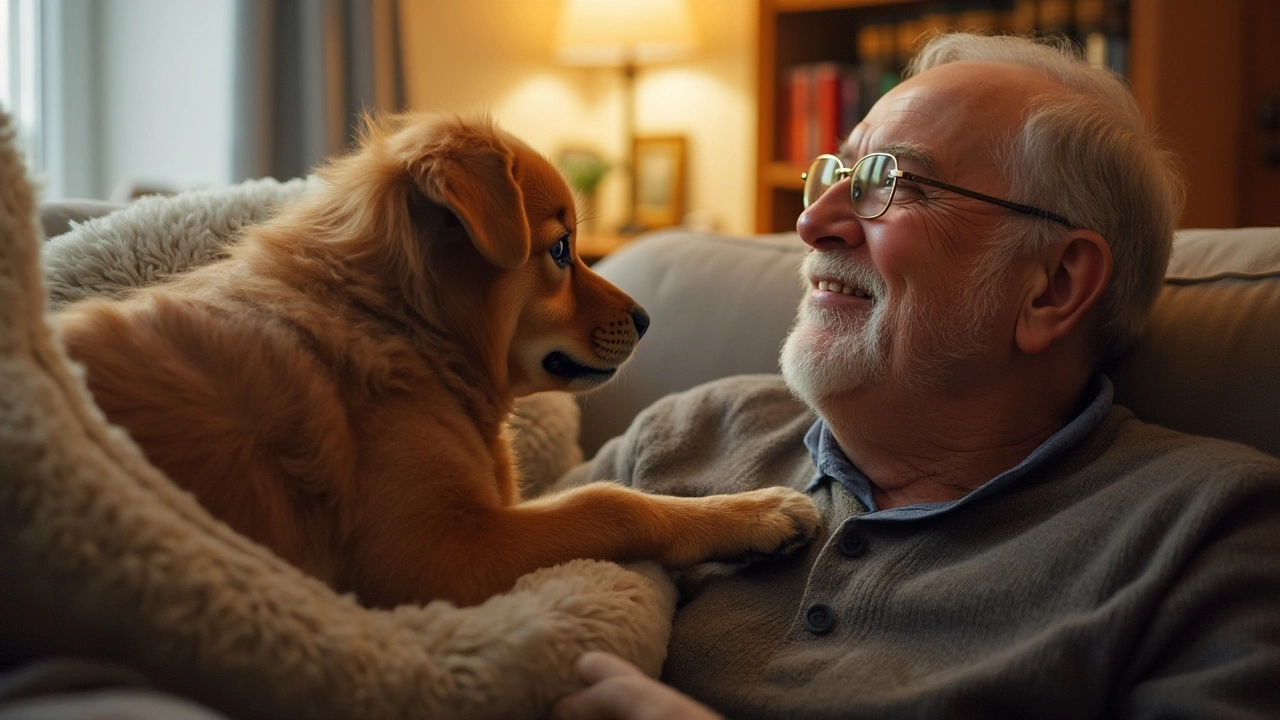Pet Communication: Simple Ways to Understand Your Dog and Cat
Ever wonder what your dog is trying to tell you when they bark, wag, or stare? Or why your cat flicks its tail before disappearing into a box? The truth is, pets speak all the time. You just need to learn the basics. Below are practical tips you can use right now to get clearer signals from your furry friends.
Listen to the Sounds
Dogs use barking, whines and growls as a vocabulary. A short, high‑pitched bark often means excitement – think of a dog seeing a favorite toy. A low, continuous bark can signal a warning about a stranger or a noise outside. Whining usually means they need something: a bathroom break, a treat, or just attention. Growling isn’t always aggressive; sometimes a dog growls when playing rough and expects you to stop.
Cats are quieter but their meows have meaning too. A short, high meow usually asks for food, while a longer, deeper tone can be a request for affection. When a cat chirps at a bird, it’s excitement mixed with a little frustration – they can’t get to it, but they’re happy to watch.
Read the Body Language
Tail position is a quick glance into mood. A wagging tail that’s loose and sweeping means a dog is relaxed and happy. If the tail is stiff and high, the dog might be alert or even anxious. A tucked tail signals fear.
For cats, a puffed-up tail and hair standing up shows they feel threatened. A slow, gentle sway of the tail while sitting often means they’re comfortable and watching something. Ears are another clue: dogs with ears forward are interested; ears back can mean fear or submission. Cats that flip their ears forward are curious, while ears flat against the head are a warning sign.
Eye contact matters. A soft, slow blink from a dog is a sign of trust – you can return the blink to strengthen the bond. A direct stare from a dog can be a challenge, especially if the dog’s body is tense. Cats use slow blinks to show they feel safe; a quick, darting glance may mean they’re on edge.
Use Consistent Signals
Pets learn best when you’re consistent. If you always say “treat” before giving a snack, the word becomes a cue. Same goes for “walk” or “bed”. Dogs and cats will start to respond to the tone and the word together, not just the action.
Hand signals work well, especially for dogs. A flat hand palm‑out can mean “stay”, while a raised hand with a closed fist can mean “stop”. Keep the gestures simple and use them every time you want the same response.
Pay Attention to Context
Signals don’t exist in a vacuum. A dog that barks at the door might be warning you about a delivery. The same bark at the park could just be excitement over other dogs. Look at what’s happening around your pet to interpret correctly.
Similarly, a cat that hisses while you’re petting it might be overstimulated. If you stop the petting and give them space, the hissing usually stops. Recognizing the situation helps you react the right way and avoid stress.
Practice Patience and Observation
Getting good at pet communication takes time. Spend a few minutes each day just watching your dog or cat without trying to intervene. Notice the small shifts in posture, ear movement, and sound. Over a week you’ll start to see patterns.
When you’re unsure, ask yourself: "What would I be feeling if I were in this position?" It’s not exact, but it guides you toward empathy, which is the core of any good pet relationship.
Understanding pet communication isn’t about mastering a science; it’s about being curious, consistent, and kind. Use these simple steps, and you’ll notice fewer misunderstandings, calmer walks, and more happy moments with your dog or cat.

Understanding Your Dog's Paw Gestures: What It's Telling You
When your dog places their paw on you, it's more than just a random touch. This gesture can convey a range of emotions and desires, from affection to playfulness. Understanding these signals helps deepen the bond with your furry friend. This article explores the meanings behind different paw interactions, providing insights into your dog's behavior and tips on choosing the best dog bed to support their physical comfort.
View more